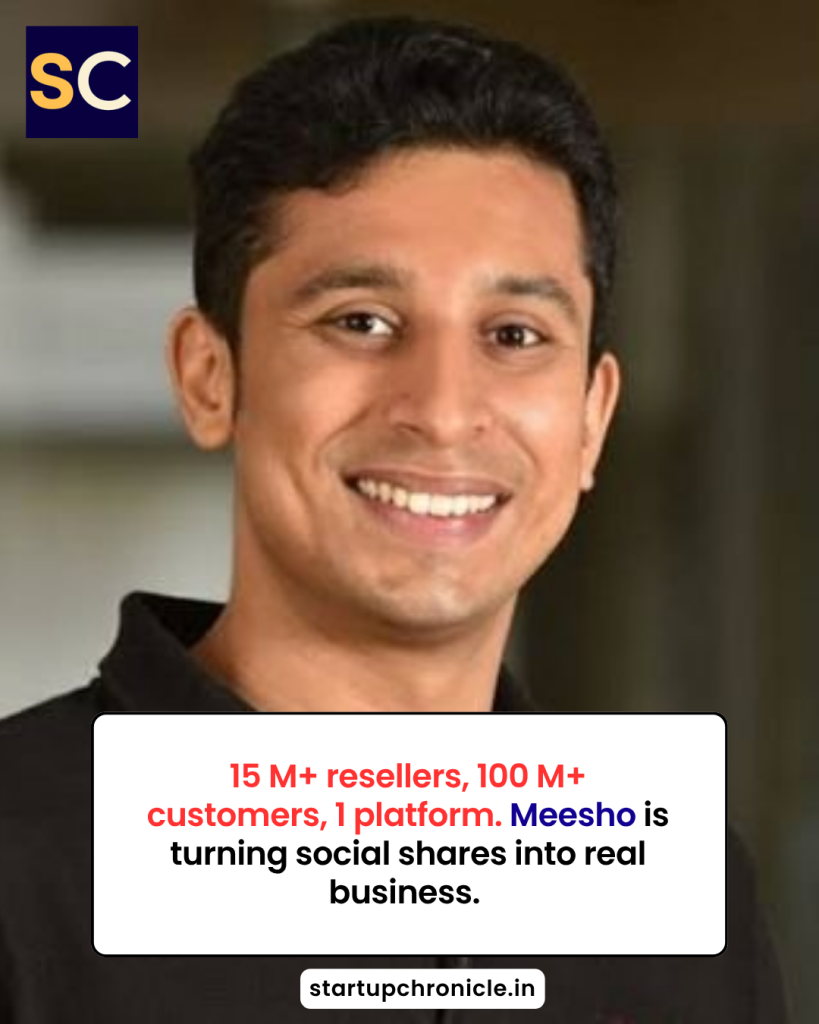In 2015, when Indian e-commerce was still centered around big cities and dominated by major players, Vidit Aatrey and Sanjeev Barnwal launched Meesho with a simple but revolutionary idea — to empower individuals, especially women in smaller towns, to build businesses through social media platforms.
The concept was as unique as it was ambitious: create a marketplace where anyone could become a reseller, selling products via WhatsApp, Facebook, Instagram, and other social networks. These resellers didn’t need warehouses, inventory, or large capital. All they needed was a smartphone and a social network.
Fast forward to 2025, Meesho has evolved into one of India’s largest and most impactful social commerce platforms, valued at $4.9 billion with an annual revenue exceeding $600 million. It serves over 100 million customers and empowers more than 15 million resellers, most of whom are women and first-time entrepreneurs from Tier-2 and Tier-3 cities.
Meesho’s appeal lies in its inclusivity. By lowering the barriers to entrepreneurship, it has created a digital ecosystem that thrives on community and connection. For many women in small towns, the platform has been a gateway to financial independence. They curate products, share catalogs via chat, and earn profits on every sale — effectively transforming casual social-media activity into a steady income stream.
The company’s journey from a startup idea to a multi-billion-dollar enterprise has been driven by strong execution, innovative technology, and a deep understanding of India’s non-urban markets. Meesho has leveraged logistics networks, data-driven recommendations, and easy digital payment systems to make selling seamless. It also provides transparent commission structures and easy return policies to ensure trust within its ecosystem.
Unlike traditional e-commerce players that focus heavily on direct consumer sales, Meesho built its foundation around resellers and small entrepreneurs, making them the center of its business model. This approach has created an economic ripple effect — helping millions generate income from their homes while giving consumers access to affordable goods across categories like fashion, home, kitchen, and beauty.
As Meesho grew, it expanded beyond just reselling. The platform began integrating content-commerce, live selling, and influencer marketing, bringing creators and small brands into the fold. Its vision today extends beyond being a marketplace — it aims to be a digital ecosystem where anyone can start, grow, and scale a business online.
Of course, the journey hasn’t been without challenges. Ensuring quality, reducing returns, maintaining customer trust, and competing with major e-commerce giants require continuous innovation. Yet, Meesho’s agile model and focus on Tier-2/3 markets give it a competitive edge.
By 2025, Meesho’s success stands as a reflection of India’s digital transformation. It has proven that commerce can be both social and inclusive, bringing millions into the digital economy who were once left out.
In Vidit Aatrey’s words, Meesho’s mission is to “democratize internet commerce.” And in doing so, the company has become more than just a startup — it has become a symbol of India’s rising generation of micro-entrepreneurs who are redefining what it means to do business in the digital age.
From a simple idea born in a Bengaluru apartment to a platform that powers millions of small dreams, Meesho’s story is one of empowerment, innovation, and impact.
Last Updated on Saturday, October 25, 2025 10:25 am by Startup Chronicle Team
